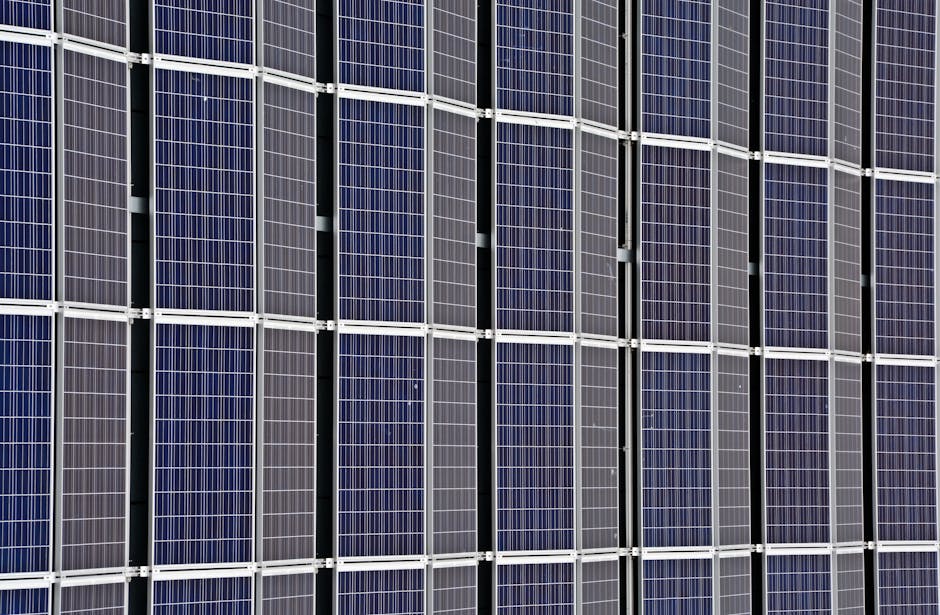Can You Power A Shed With Solar Panels?
As the world shifts towards renewable energy, many homeowners are exploring the potential of solar power. One common question that arises is whether you can power a shed with solar panels. The answer is a resounding yes! In this article, we will delve into the details of how to effectively power a shed using solar energy, the benefits of doing so, and the steps you need to take to set up your solar-powered shed.
Understanding Solar Power Basics
Before diving into the specifics of powering a shed, it’s essential to understand how solar power works. Solar panels convert sunlight into electricity through photovoltaic cells. This electricity can then be used to power various devices and appliances.
How Solar Panels Work
- Photovoltaic Cells: These cells absorb sunlight and convert it into direct current (DC) electricity.
- Inverter: The DC electricity is then converted into alternating current (AC) electricity by an inverter, making it usable for most household appliances.
- Battery Storage: Excess energy can be stored in batteries for later use, ensuring you have power even when the sun isn’t shining.
Benefits of Powering a Shed with Solar Panels
Powering a shed with solar panels comes with numerous advantages. Here are some key benefits:
- Energy Independence: Generate your own electricity and reduce reliance on the grid.
- Cost Savings: Save on electricity bills and potentially earn money through net metering if you produce excess energy.
- Environmentally Friendly: Reduce your carbon footprint by using renewable energy sources.
- Versatility: Power various devices, from lights and tools to heating systems and refrigerators.
Assessing Your Power Needs
Before installing solar panels, it’s crucial to assess your power needs. This will help you determine the size and number of solar panels required for your shed.
Calculating Power Requirements
- List Your Appliances: Make a list of all the devices you plan to power in your shed.
- Check Wattage: Find the wattage of each appliance. This information is usually found on the device or in the user manual.
- Estimate Usage: Estimate how many hours per day each appliance will be used.
- Calculate Total Watt-Hours: Multiply the wattage of each appliance by the number of hours it will be used to get the total watt-hours needed.
For example, if you have a 60-watt light bulb that you use for 5 hours a day, it will consume 300 watt-hours (60 watts x 5 hours). If you plan to use multiple devices, add up the watt-hours for a comprehensive total.
Choosing the Right Solar Panels
Once you have a clear understanding of your power needs, it’s time to choose the right solar panels. Here are some factors to consider:
Types of Solar Panels
- Monocrystalline Panels: Highly efficient and space-saving, but typically more expensive.
- Polycrystalline Panels: More affordable but slightly less efficient than monocrystalline panels.
- Thin-Film Panels: Lightweight and flexible, but generally less efficient and require more space.
Panel Efficiency and Size
Consider the efficiency rating of the panels, which indicates how much sunlight they can convert into usable electricity. Higher efficiency panels will produce more power in a smaller area, which is beneficial if space is limited.
Setting Up Your Solar Power System
Now that you’ve assessed your power needs and chosen the right solar panels, it’s time to set up your solar power system for your shed. Here’s a step-by-step guide:
1. Gather Necessary Components
- Solar panels
- Inverter
- Battery storage (if desired)
- Charge controller (to regulate battery charging)
- Mounting hardware
- Wiring and connectors
2. Install Solar Panels
Choose a location on your shed that receives ample sunlight throughout the day. Follow these steps for installation:
- Mounting: Securely mount the solar panels on the roof or a nearby structure using the appropriate hardware.
- Wiring: Connect the panels to the inverter and charge controller using the provided wiring and connectors.
- Grounding: Ensure the system is properly grounded to prevent electrical hazards.
3. Connect the Inverter and Battery
Connect the inverter to the solar panels and battery (if using). The inverter will convert the DC electricity from the panels into AC electricity for your shed.
4. Test the System
Once everything is connected, test the system to ensure it’s functioning correctly. Check the inverter display for any error messages and verify that power is being generated.
Maintaining Your Solar Power System
To ensure your solar power system operates efficiently, regular maintenance is essential. Here are some tips:
- Clean the Panels: Dust and debris can reduce efficiency. Clean the panels periodically with water and a soft cloth.
- Check Connections: Inspect all wiring and connections for wear or damage.
- Monitor Performance: Keep an eye on the inverter display to track energy production and identify any issues.
Common Questions About Solar-Powered Sheds
Can I use solar power for heating my shed?
Yes! You can use solar energy to power heating systems, such as electric heaters or radiant floor heating. Just ensure your solar system is sized appropriately to handle the additional load.
What happens if it’s cloudy or rainy?
Solar panels can still generate electricity on cloudy days, although at reduced efficiency. Battery storage can help provide power during periods of low sunlight.
Is it expensive to install solar panels for a shed?
The cost of installing solar




